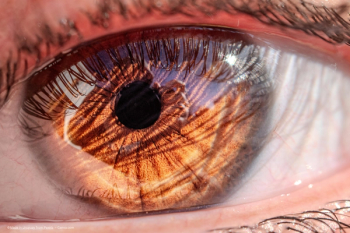
First choice for glaucoma
Medical therapies are effective, but expensive too
Five contemporary classes of medications exist: prostaglandin analogues, beta blockers, carbonic anhydrase inhibitors, alpha-adrenergic agonists and parasympathomimetics. Four of these five classes currently are available as generic medications, and the fifth class - prostaglandin analogues - will follow soon in 2011.
"Although one would expect that this will result in price reductions for medications, the actual cost savings to patients remain unknown," said Dr Singh, professor of ophthalmology and director, Glaucoma Service, Stanford University School of Medicine, Stanford, California.
An ageing population in both developing and developed countries will increase the burden of glaucoma dramatically, he said. Dr Singh emphasized that "glaucomatous disease already is the leading cause of irreversible blindness worldwide, second only to cataract in terms of disease burden related to sense organs, according to the World Health Organization."
Despite the historically high cost of glaucoma medications, there is a reason why physicians prefer medicines over laser or surgery as initial therapy, according to Dr Singh. The Collaborative Initial Glaucoma Treatment Study (CIGTS), which compared medical treatment with trabeculectomy for 607 patients with newly diagnosed glaucoma, showed that the IOP was slightly lower after surgery compared with medical therapy. At the 5-year time point, however, there was no difference between the two treatment groups with regard to visual preservation.
Patients opt for medical therapy initially when offered the two treatments because of the adverse events associated with glaucoma surgery, he said. Although a good case can be made for initial laser trabeculoplasty, Dr Singh said that initial medical therapy, when available and affordable, will continue to be the preferred first-choice treatment in the United States and other developed countries for a variety of reasons.
"Medical therapy is effective but expensive, especially given the circumstance that many of our patients need more than one medication," Dr Singh said.
"It is not uncommon for such patients who are taking more than two medications to spend $2000 or more annually to treat glaucoma," he said.
Although Dr Singh said he believes that glaucomatous disease will continue to be treated initially with medications in most circumstances in the developed world and that the number of stand-alone glaucoma operations will not increase substantially over the next 5 years, he does see the potential for tremendous growth in the number of combined cataract and glaucoma procedures. Further, trabeculectomy, the historical glaucoma surgery of choice in combined procedures, will not continue to hold this top position. "The threshold for performing combined procedures will decrease as we develop safer glaucoma operations, even if they do not lower IOP as much as trabeculectomy," he said. Patients who normally would be treated medically and not with surgery may undergo adjunctive glaucoma procedures when undergoing cataract surgery, thus potentially reducing the need for glaucoma medications in the post-cataract surgery years.
"As patients live longer and have cataract surgery earlier, there will be an increasing opportunity for patients to decrease the burden of disease and cost of glaucoma therapy in the years following cataract surgery by undergoing a combined procedure that will safely lower their IOP and reduce the dependence on glaucoma medications in the post-cataract surgery years," Dr Singh said.
There are several novel glaucoma surgical procedures that show much promise in replacing trabeculectomy as the operation of choice in combination with cataract surgery but none will replace trabeculectomy from the top spot as the stand-alone glaucoma operation for refractory glaucoma in the near future, according to Dr Singh.
The cost of developing medications is high, sometimes $1 billion or more per product, he said. It is clear that developed countries, directly or indirectly, pay a disproportionally higher amount for the development of these drugs.
"It is hoped that the increasing numbers of patients with glaucoma in the years to come will spur innovations resulting in better glaucoma therapies in the future," Dr Singh concluded.
Newsletter
Get the essential updates shaping the future of pharma manufacturing and compliance—subscribe today to Pharmaceutical Technology and never miss a breakthrough.








































